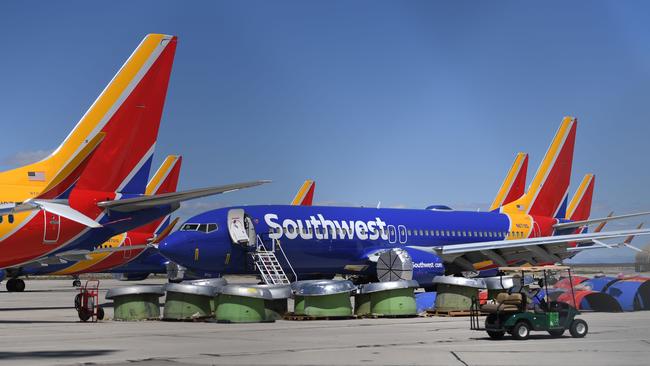Flight-control system caused Ethiopia crash
Preliminary findings from the investigation into the Ethiopian Airlines crash have pointed to Boeing’s flight-control feature.

Preliminary findings from the investigation into the Ethiopian Airlines crash have pointed the finger at Boeing’s flight-control feature unique to the 737 Max.
Although the findings are still subject to revision before the official release of the preliminary report, the emerging consensus among investigators is that the system automatically activated on Flight ET302, and sent it plunging to the ground six minutes after takeoff from Addis Ababa on March 10.
The findings are based on data retrieved from the plane’s flight recorders, and follow earlier observations of “clear similarities” between the Ethiopian Airlines crash and the Lion Air disaster last October. A total of 346 people were killed in the accidents.
In both crashes, near-new 737 Max 8 aircraft nosedived into the ground and sea after the pilots struggled to control the planes shortly after takeoff and requested to turn back.
After the Lion Air crash, it was revealed Boeing had installed the manoeuvring characteristics augmentation system (MCAS) on the 737 Max 8 to account for larger engines placed slightly forward on the wings. Fed by data from a single angle-of-attack sensor, the system can activate when the plane is being manually flown, and pushes the nose down. In the case of the Lion Air crash last October 29, the pilot is thought to have been unaware of MCAS or how it operated, fighting with the plane until it ultimately nosedived into the sea.
Erroneous information from an angle-of-attack sensor was blamed for triggering MCAS.
In the days that followed, the US Federal Aviation Administration issued an emergency airworthiness directive, shedding light on MCAS and the steps pilots needed to take to deal with it.
That prompted widespread criticism of Boeing by pilots, who said they had not been informed about the system or its capabilities by the airline.
Five months later when the Ethiopian Airlines crash occurred involving another near-new Boeing 737 Max, regulators and airlines worldwide made the decision to ground the model.
On Thursday, Boeing announced it had developed a software update and revised training for the 737 Max which was cautiously welcomed by pilots.
The “fix” included ensuring MCAS responded to information from both angle-of-attack sensors, rather than just one, and could be easily turned off by the pilot. A Boeing official said the fixes were not an admission the plane was ever faulty, but the updates would increase the safety of the aircraft.
“We are very confident that we would never see the system behave in a certain way and we are very confident we have the ability to ensure accidents like these never happen again,” he said.
Australian Federation of Air Pilots safety and technical manager Marcus Diamond said the improvements would give him confidence to fly the plane, should Virgin Australia go ahead with an order for 30 737 Max 8s.
The airline is due to take delivery of its first 737 Max 8 in November but has indicated it won’t go ahead with the order unless it is completely satisfied with the plane’s safety.
Garuda Indonesia last week cancelled its order for 49 of the 737 Max 8s, citing “passengers’ loss of confidence” in the model.
The aircraft remains grounded around the world until the fixes are completed and regulators agree to the 737 Max returning to the skies.
Boeing has also directed all pilots of the aircraft to undergo further training before getting into the cockpit again.
Although the software update will take only an hour to install, the grounding, affecting 376 of the 737 Max 8 and 9s, is expected to last several more weeks and perhaps even months. In the meantime, Boeing is continuing production of the aircraft at its Renton factory in Seattle.




To join the conversation, please log in. Don't have an account? Register
Join the conversation, you are commenting as Logout